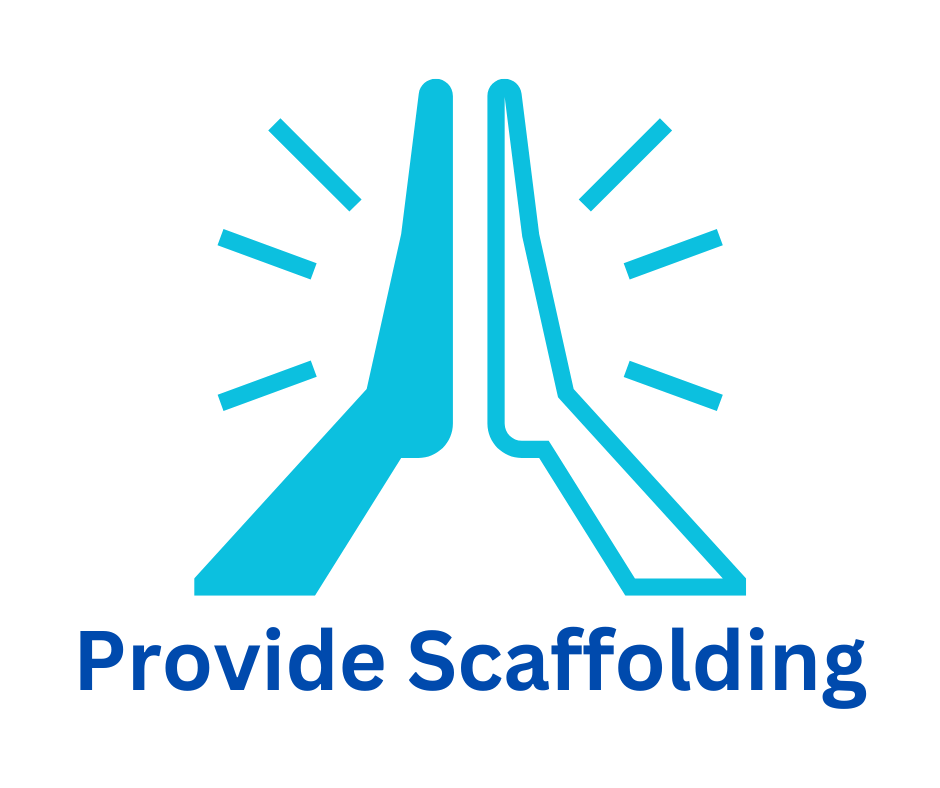
The EEF defines scaffolding as ‘a metaphor for temporary support that is removed when it is no longer required’, providing ‘enough support so that pupils can successfully complete tasks that they could not yet do independently’.
To enable all pupils to access the learning, provide them with a scaffold. Rather than setting lower expectations, support pupils to reach ambitious goals using a range of scaffolding processes.
Checklist
| Consider the specific barrier a pupil or group of pupils face. | ✔ |
| Provide additional support – the scaffold – to allow the pupil/s to access the learning. | ✔ |
| Decide how long the scaffold in needed and then remove. | ✔ |
Examples
- A visual scaffold, such as a task planner.
- A verbal scaffold, such as a teacher correcting a misconception at a pupil’s desk.
- A written scaffold, such as a writing frame.
Further Information
EEF blog: Scaffolding – more than just a worksheet Education Endowment Foundation,
A systematic review of 56 studies (Belland et al., 2017) found that ‘scaffolding has a consistently strong effect across student populations’, noting a ‘very large’ effect size among students with learning disabilities.
Video
Coming soon.